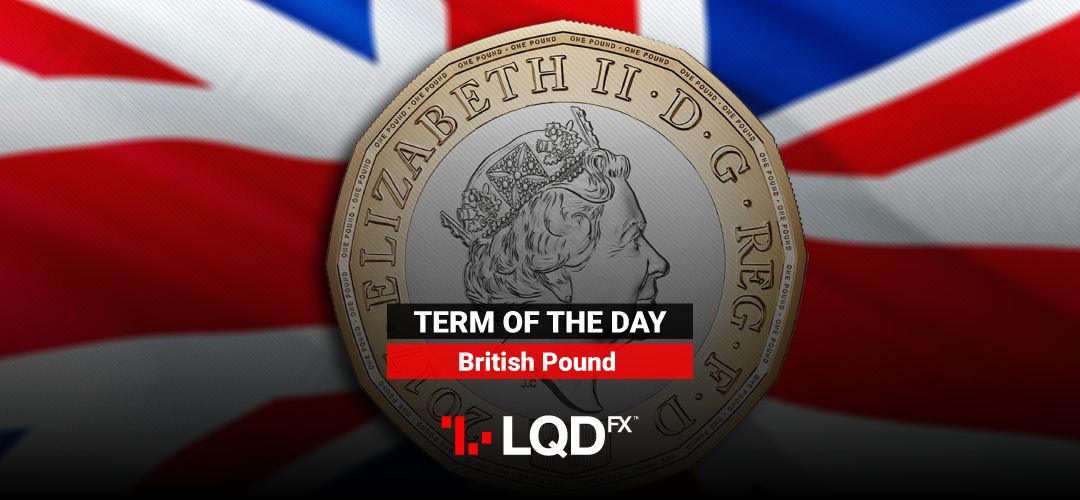Pound sterling, or commonly known pound, is the official currency of the United Kingdom, some Crown dependencies and other territories.
It is one of the currencies that traders worldwide prefer to trade in the Forex and the oldest actively traded. The fourth most-traded currency among Forex traders belongs to Majors while it is the third most-held reserve currency in global reserves.
The exchange rate of the pound sterling against the US dollar is the “cable”. Further, Forex traders of GBP/USD are sometimes referred to as “cable dealers”.
The issuance of British pound banknotes is regulated by the Bank of England, the central bank for the pound sterling. The Bank of England, founded in 1964, and particularly its Policy Committee, has the delegated responsibility of managing monetary policy. Nonetheless, in Britain’s Crown Dependencies, the pounds are not regulated by the BoE and are issued independently.
The pound sterling is sometimes abbreviated to just sterling, particularly in the wholesale financial markets. Pound’s ISO 4217 currency code is GBP and its symbol is the £, which comes from medieval Latin documents. The letter “L” was the abbreviation for libra that is the basic Roman unit of weight.
A common slang term for the pound sterling or pound is quid.
START TRADINGPound Sterling and Brexit
As a member of the European Union, the United Kingdom could have adopted the euro as its currency. However, the UK negotiated an opt-out for political reasons,. This was partly because of the pound’s identity as a British sovereignty symbol.
The pound and the euro fluctuate in value against one another. The Brexit process which started following the 2016 referendum makes adoption of the euro extremely unlikely.
The result of the 2016 referendum caused a major decline in the pound against other world currencies as the future of international trade relationships became unclear. The weakness of the sterling against the euro by 5% was seen overnight. The night before the vote, the pound was trading at €1.30 while the next day it had fallen to €1.23. The vote in favour of Brexit, shocked world markets and had an immediate and pronounced effect on the British currency.
By October 2016, the exchange rate was €1.12 to the pound, i.e. 14% down since the referendum. The pound had a turbulent year in 2018 and is widely expected to remain under pressure until there is clarity around Brexit.
For 2019, trading in the British pound has fallen sharply since March when Britain delayed its exit from the EU. Turnover in May was down almost 10% compared to a year earlier.
Pound Sterling and Dollar
From 2012 to 2018, the British currency has been worth $1.35 to $1.75 in U.S. dollars (USD). During recent history, one U.S. dollar has been worth less than one British pound. However, as of October 2018, the pound is around $1.54 to one pound, down from $1.71 to one pound in July 2014. Brexit saga, worsening economy in Great Britain and improving US economy are among the reasons.
Three Economic Releases affecting the Pound Sterling – UK Consumer Price Index (CPI)
CPI measures the change in the price of goods and services from the consumer perspective over time. It is a key measure of purchasing trends and inflation. In UK, the Office for National Statistics is responsible for the preparation and the release of CPI. The “shopping baskets” of items used in compiling the various measures of UK consumer price inflation are reviewed each year.
A higher than expected CPI should be interpreted as bullish in favour of the British pound. On the other hand, a lower than expected CPI should be taken as bearish for the GBP.
Three Economic Releases affecting the Pound – BoE Rate Announcement
The monetary policy of each national bank affects the national currency. Accordingly, the monetary policy adopted by the BoE affects directly the pound. Decisions for interest rates are among the most impactful for a currency. Thus, investors shall take into consideration this announcement regarding any monetary policy changes.
The Monetary Policy Committee (MPC) of BoE decides what monetary policy action to take, setting and announcing policy 8 times a year. It can take around two years for monetary policy to have its full effect on the economy. The quarterly Inflation Report explains the reasons behind monetary policy decisions.
Three Economic Releases affecting the Pound – UK GDP
The primary measure of economic activity in the U.K., as in many other countries, is the gross domestic product (GDP). It measures the annualized change in the inflation-adjusted value of all goods and services produced by the economy. It is the key indicator for considering whether an economy is healthy or not. Stronger than expected GPD data should be interpreted as positive for the GBP. Respectively, lower than expected data shall be interpreted as negative to the GBP.
The Office for National Statistics releases Estimates of GDP on a monthly and quarterly basis. There are three different GDP reports traders should be aware of. The Preliminary GDP estimate is released the earliest and tends to have the biggest impact because it gives traders a first look into the economic health of the U.K.
Sources: Wikipedia, investing.com, BoE, Investopedia, Reuters
PLEASE NOTE The information above is not investment advice.
